Kinematics data recordings
In the set up used for the chimpanzee locomotion studies, four cameras are wall-mounted along one side of the runway at a height of 2.15m and angles between camera pairs of ~ 25o – 50o.
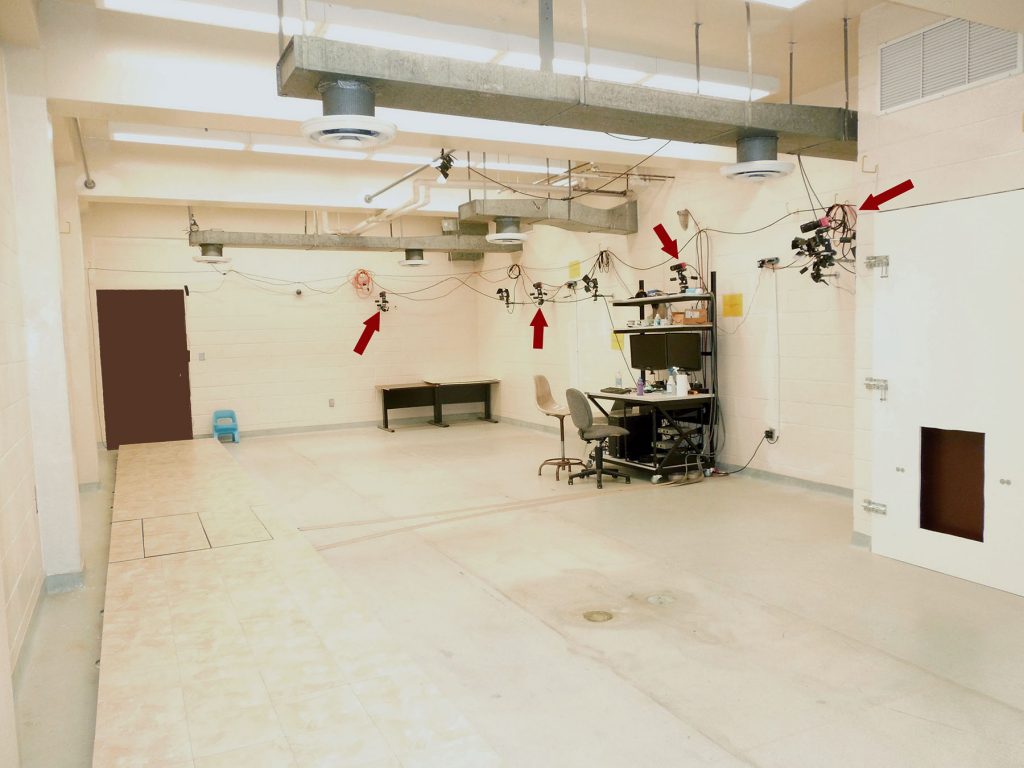
Stony Brook Primate Locomotion Lab, kinematics/kinetics recording room. Photograph by Brigitte Demes, nd
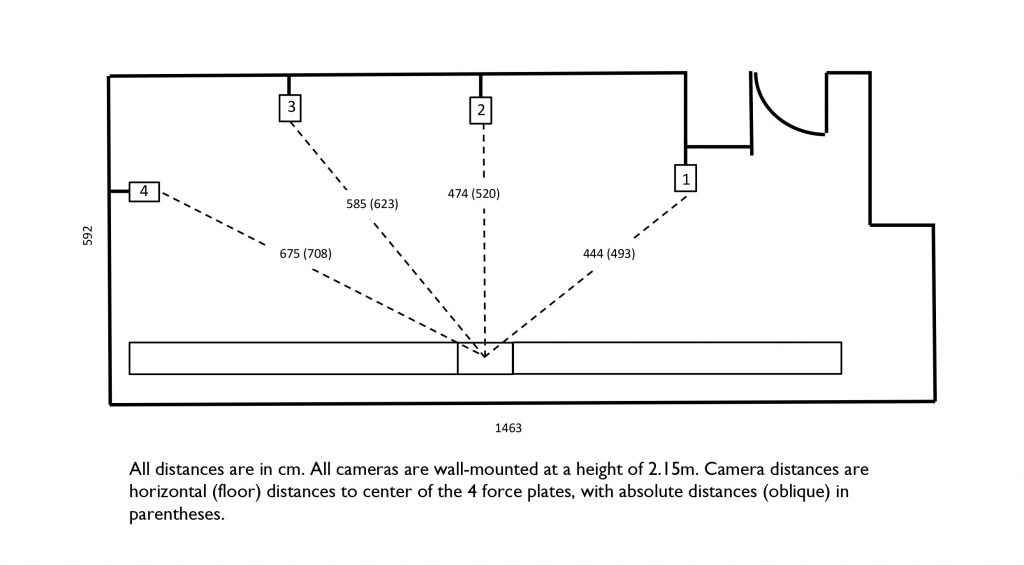
Floor plan of the Stony Brook Primate Locomotion Lab, kinematics/kinetics recording room with runway and force plates, from Holowka, 2015
The cameras are equipped with C-mount zoom lenses and can be directed and zoomed in on regions of interest of various sizes. Two calibration fixtures with 48 and 84 points of known distances to each other (Xcitex, Woburn, MA) are used to calibrate regions of interest with the following dimensions: 0.5m x 0.6m x 0.5m, and 1.95m x 0.65m x 1.05m.

Stony Brook Primate Locomotion Lab large kinematics calibration frame manufactured by Xcitex, Woburn, MA. | www.xcitex.com

Stony Brook Primate Locomotion Lab small kinematics calibration frame manufactured by Xcitex, Woburn, MA | www.xcitex.com
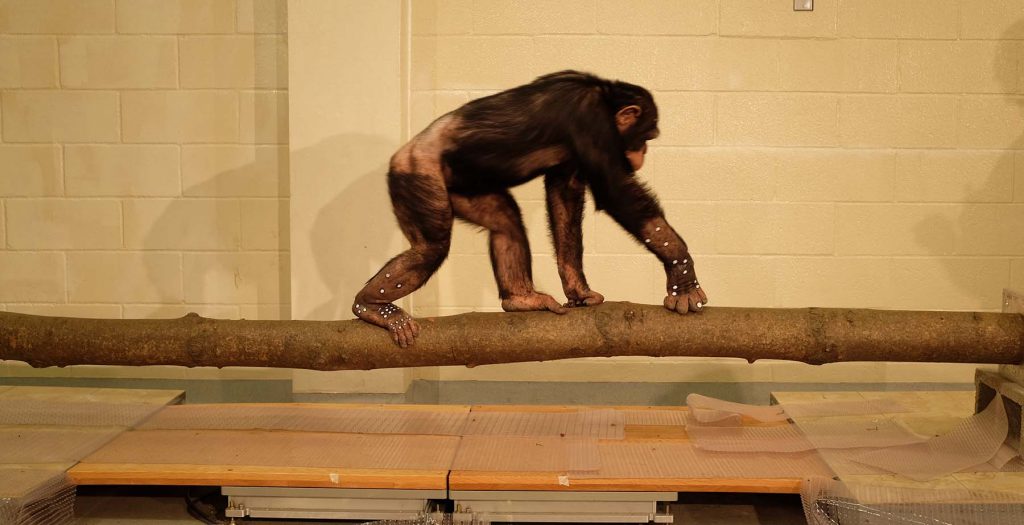 For simulated arboreal locomotion, a 5m long, 0.15m diameter beech tree trunk with smooth bark is used. It has square aluminum plates affixed on both ends and can rest on these plates in the center of the runway for horizontal arboreal walking.
For simulated arboreal locomotion, a 5m long, 0.15m diameter beech tree trunk with smooth bark is used. It has square aluminum plates affixed on both ends and can rest on these plates in the center of the runway for horizontal arboreal walking.
For vertical climbing the tree trunk is secured in vertical position with the aluminum plates bolted to the floor and affixed to the ceiling with mounting brackets.
To calibrate the elevated spaces for arboreal locomotion, the calibration frame is elevated on a table, and in the vertical setup also rotated such that the long axis aligns with the climbing pole. No forces are recorded in the simulated arboreal setups.
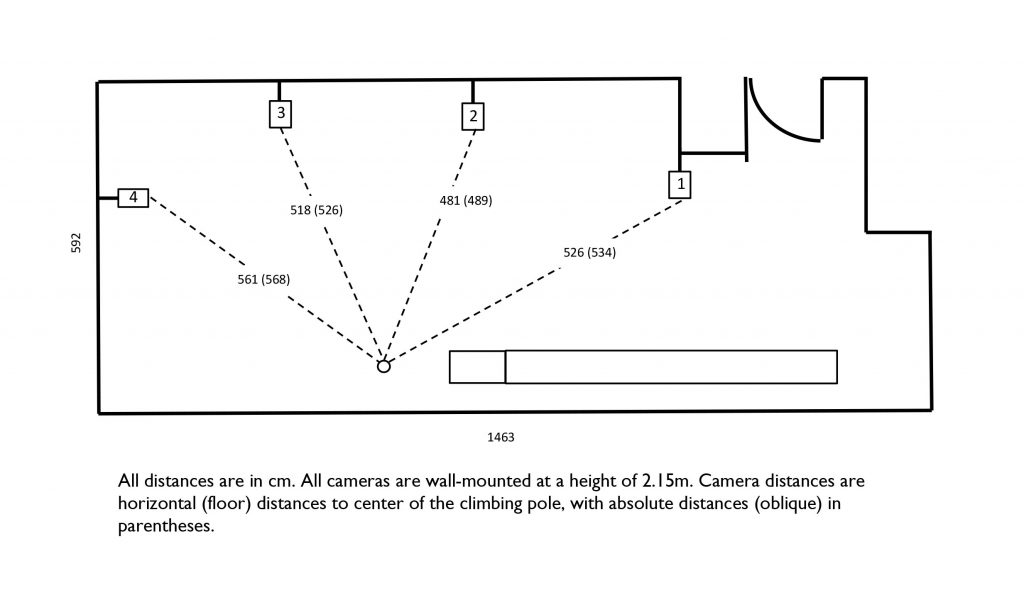
Floor plan of the Stony Brook Primate Locomotion Lab, kinematics/kinetics recording room with vertical climbing pole, from Holowka, 2015
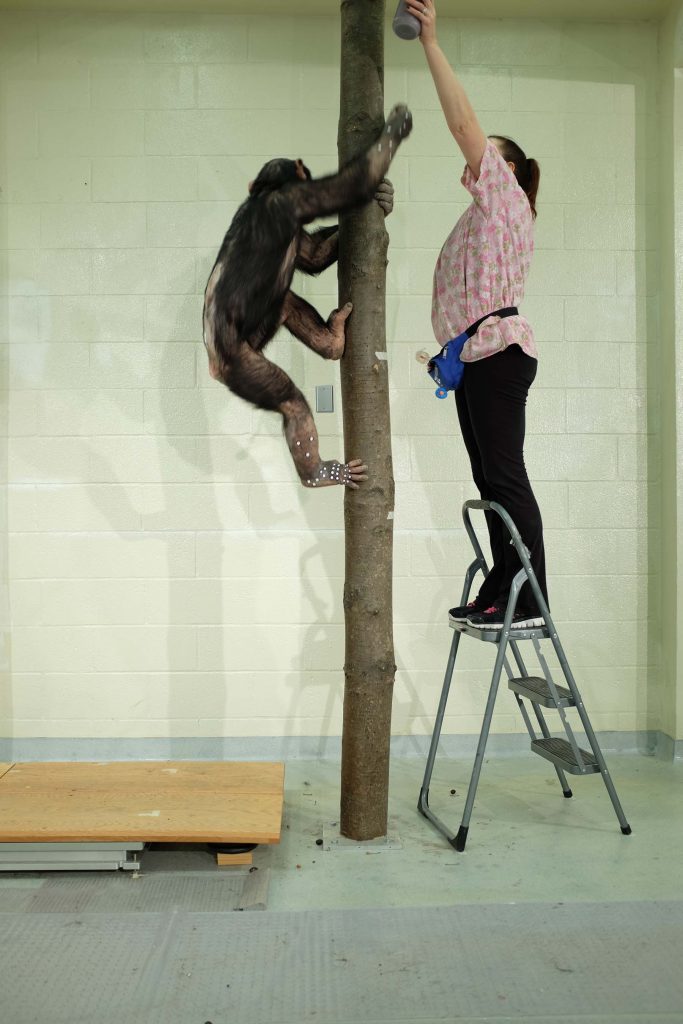
Chimpanzee research subject with animal trainer during pole climbing kinematics recording session. Photograph by Brigitte Demes, nd

